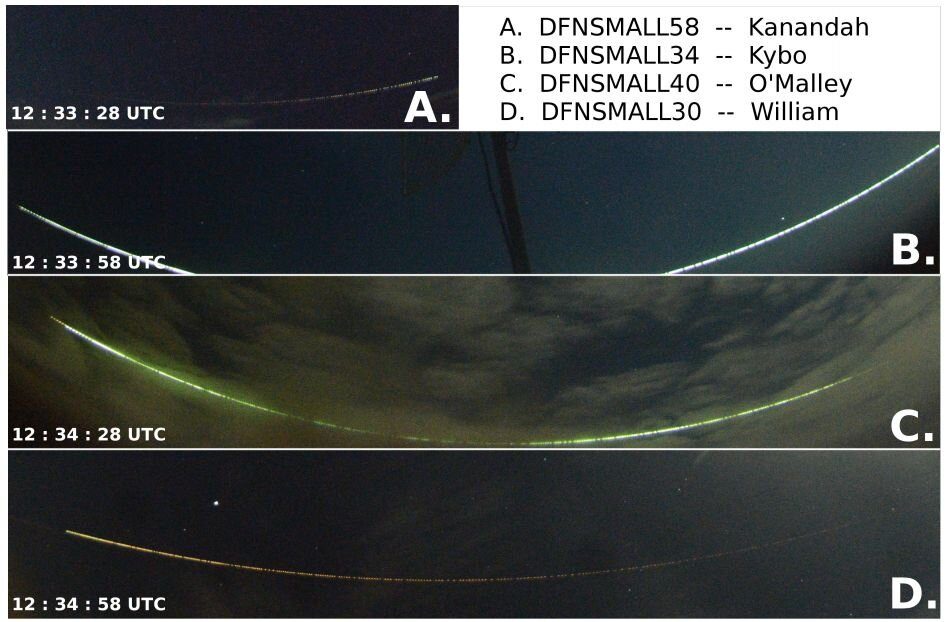
© arXiv:1912.01895 [astro-ph.EP]Long exposure images of event DN170707_01. The event lasted over 90 seconds and spanned four 30 second exposures (A, B, C, D). The fireball was first observed at 85 km altitude, reached as low as 58 km, and then was visible until 86 km before escaping the Earth’s atmosphere. The initial velocity was 16.1 km s−1 , and the exit velocity after passing through the atmosphere was about 14.6 km s−1 . The images are all oriented so that the fireball travels from left to right (west to east).
A team of researchers at Curtin University in Australia reports that a meteor that streaked across the Australian sky back in 2017 was a rare "grazing fireball." The group has written a paper describing their observations and findings and have posted it on the arXiv preprint server.
Back in 2017, a meteor tore through the
atmosphere over Australia.
It was notable for its duration — it lasted for approximately a minute and a half. In this new effort, the researchers have found that the object was a meteor for just a short period of time — it never struck the Earth. Instead, the
object headed back out into
space. Such meteors are known as grazing fireballs because they only graze the Earth's atmosphere rather than plunge through it. This is possible due to the angle at which it approaches. Like a
rock that skips off the surface of a lake rather than plunging in, a meteoroid can skip off the atmosphere if its angle is very small.
The researchers with this new effort used data from Australia's Desert Fireball Network — a group of space enthusiasts who capture video of space objects that appear overhead. The network is the largest in the world and, as its name implies, is focused on learning more about space objects that make their way to Earth.


Comment: Read SOTT.net's Comets and Catastrophes Series by Laura Knight-Jadczyk for more on the hazards to humanity from meteors and asteroids. Bombardments from space rocks are cyclic in nature and have occurred repeatedly throughout history.